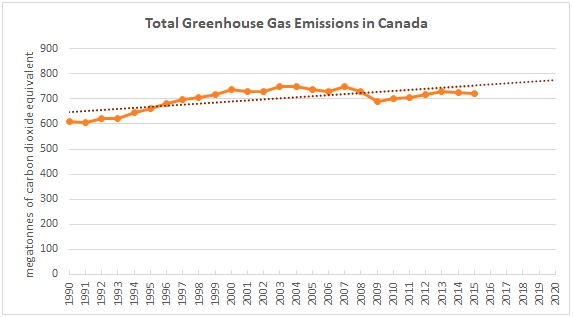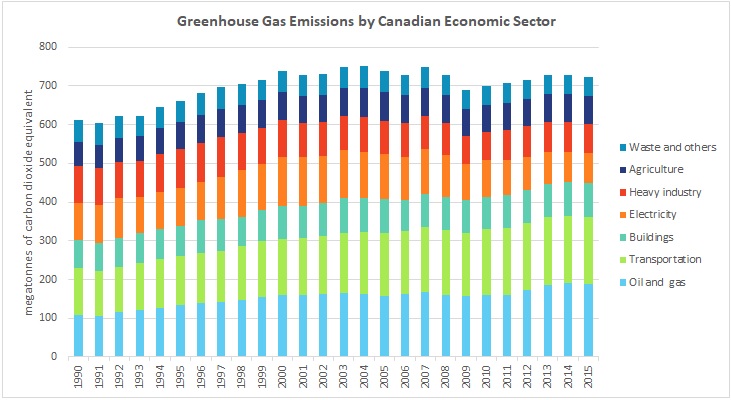Trend
As seen in the graph on the right, since 2012, the emissions show a declining trend. This decline could be understood by the gradual coal phase out and the decrease of emissions in the electricity generation sector. Yet, considering the trajectory since 1990, the trend shows an increase over the next five years. Under the Paris Agreement, Canada has committed to reducing its GHG emissions footprint by 30% below 2005 levels (738 megatonnes of carbon dioxide equivalent) by the year 2030. To this day, the overall emissions have reduced by approximately 4% since 2005.



.gif)
